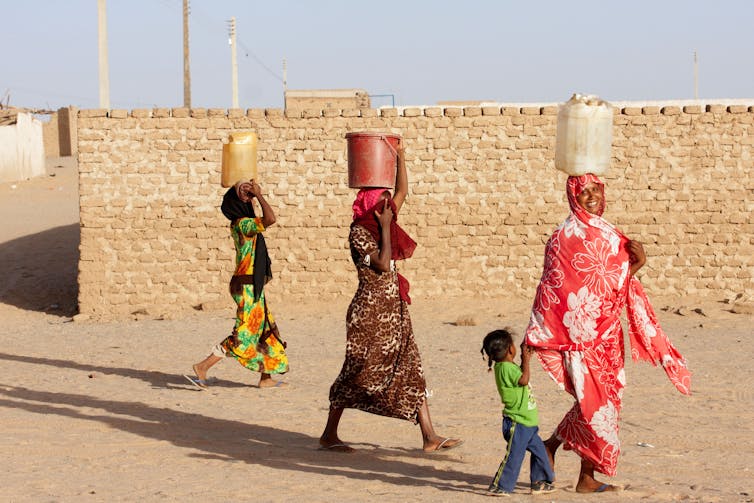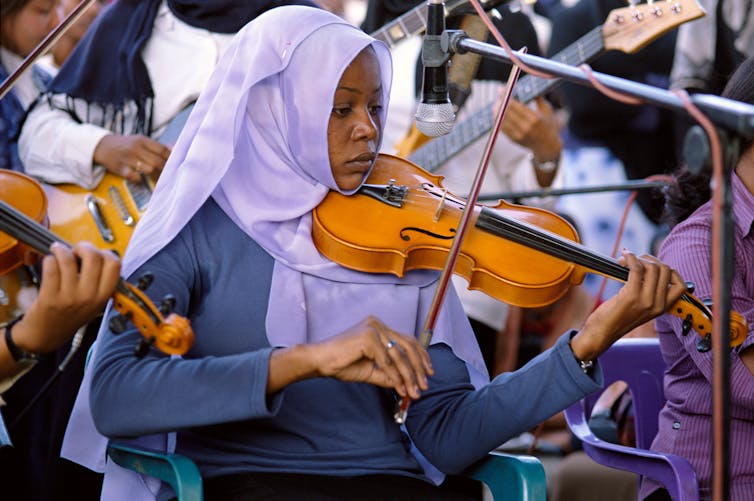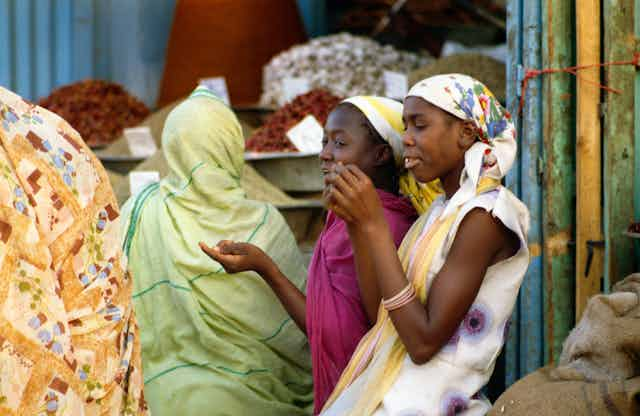Watching and hearing the horrifying reports of violence and savagery in Sudan, those of us working to end violence against women and girls immediately become concerned about how it will inevitably spill over into sexual violence. As recently as July 5, a report from the UN highlighted the “conflict-related sexual violence against internally displaced and refugee women and girls forced to flee for their lives”.
Since fighting broke out in Khartoum and spread across the country in April, the reports emerging from Sudan have been shocking. In mid-June, Reliefweb reported: “Since April 15, the number of people in need of gender-based violence services in Sudan has increased by over 1 million to 4.2 million people.”
As noted in the UN report, those most vulnerable are the internally displaced moving to try and cross borders. Humanitarian agencies are struggling to respond.
On June 9 alone the UN reported 12 verifiable instants of sexual violence affecting 37 women. Three of these cases involved young girls.
The full picture of this current surge in extreme violence against women and girls is likely to be even more horrific. Adjaratou Ndiaye, the UN Women representative in Sudan, has reported that in Darfur, western Sudan – where the Janjaweed militia that was to become the Rapid Support Force (RSF) involved in the current conflict developed – mass rapes are once again being committed.
And both sides – the government-backed Sudan Armed Forces and the RSF – are involved in these atrocities against women.
Gendered identity
This violence against women in war is in some ways an extension of Sudan’s patriarchal social structure. It’s vital to understand the gendered dimension of Sudan’s social and political structures, which leave women and girls largely powerless outside the home and subservient within it.
Sudanese national identity is highly gendered, shaped by a discourse that draws heavily on an ideal of women as exemplars of culture and morality.
Symbols of women as mothers and nurturers are central to the moral fabric of Sudanese society and indeed to its stability. Strict gender codes exist to ensure women conform to this role and violence is thereby seen as legitimate.

Until the regime of Omar al-Bashir was overturned in 2019, Sudanese women were subject to strict codes of conduct and dress. The Public Order Act of 1996 imposed conservative Islamic social codes which restricted women’s movement, work and study. Women could be imprisoned or flogged for seemingly trivial transgressions – such as wearing western-style jeans.
Women building power
Despite this history of gender inequality in Sudan, there is a rich history of women’s activism and a network of women’s organisations who work at a grass-roots level to empower women and girls. This often undocumented dimension to Sudanese society needs to be recognised internationally and supported as a critical mechanism in countering the rising levels of violence against women and girls.
Change to the underpinning norms that sanction and excuse violence against women can only effectively be challenged by women themselves. Women and girls need to be supported as change agents and not reduced to passive victims. The growing women’s movement in Sudan is important in this process.
The iconic image that emerged from the 2019 revolution that toppled al-Bashir was of Alaa Salah, a 22-year-old student, who became known as Sudan’s statue of liberty.
But groups of women meeting in each others homes had been at the forefront of the movement that toppled al-Bashir. Sudanese Women in Civic and Political Groups – or Mansam as they became known – gave a voice and image to the many women who wanted to challenge the entrenched patriarchy in Sudan.
Meanwhile, a growing network of young female Sudanese writers is challenging gender stereotypes for a growing audience, both inside and outside the country. But they too have to combat the patriarchal attitudes that pervade the country’s publishing industry and many choose to publish their books abroad initially.
“There is a patriarchal mentality that prevails throughout Sudanese society, and an extremely high sensitivity toward what female authors are writing about, especially when it seemingly contradicts societal values,” Ann el-Safi – who lives and writes between the UAE and Canada – told Words Without Borders in 2020.
Her sentiments were echoed by veteran novelist and cultural critic Zeinab Belail who said: “Writing about sex or religion is still forbidden for women. There are red lines that as a female writer you’re not even meant to approach. To do so brands you a heretic, a rogue, someone who has no appreciation for literature.”
Tragedy at Ahfad
The Ahfad University for Women – a private, non-sectarian university in Omdurnam, close to the capital Khartoum – was founded in 1966, with the aim of raising generations of women to assume social leadership.

The university has more than 5,000 students and offers a wide range of undergraduate and postgraduate degrees to PhD level. As its website states:
The university’s philosophy is to prepare women to assume greater roles in their families and communities, and in the nation as a whole. To that end, the university enrols women from all over Sudan and prepares them to be proactive change agents and leaders.
But there were recent reports not of the destruction of the campus during the violence, accompanied by the rapes of young female students as they hid, terrified in their dormitories. This was depressingly predictable.
The Ahfad University campus has been destroyed by militia groups. The lack of respect afforded to women and their human rights in general is yet again reflected in the brutal realities of conflict.

